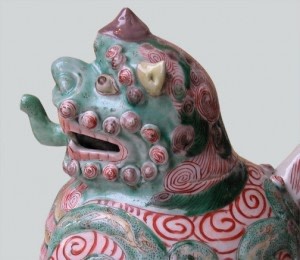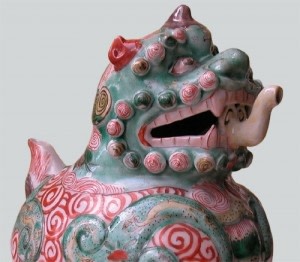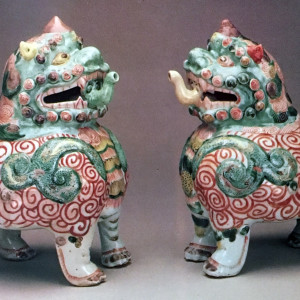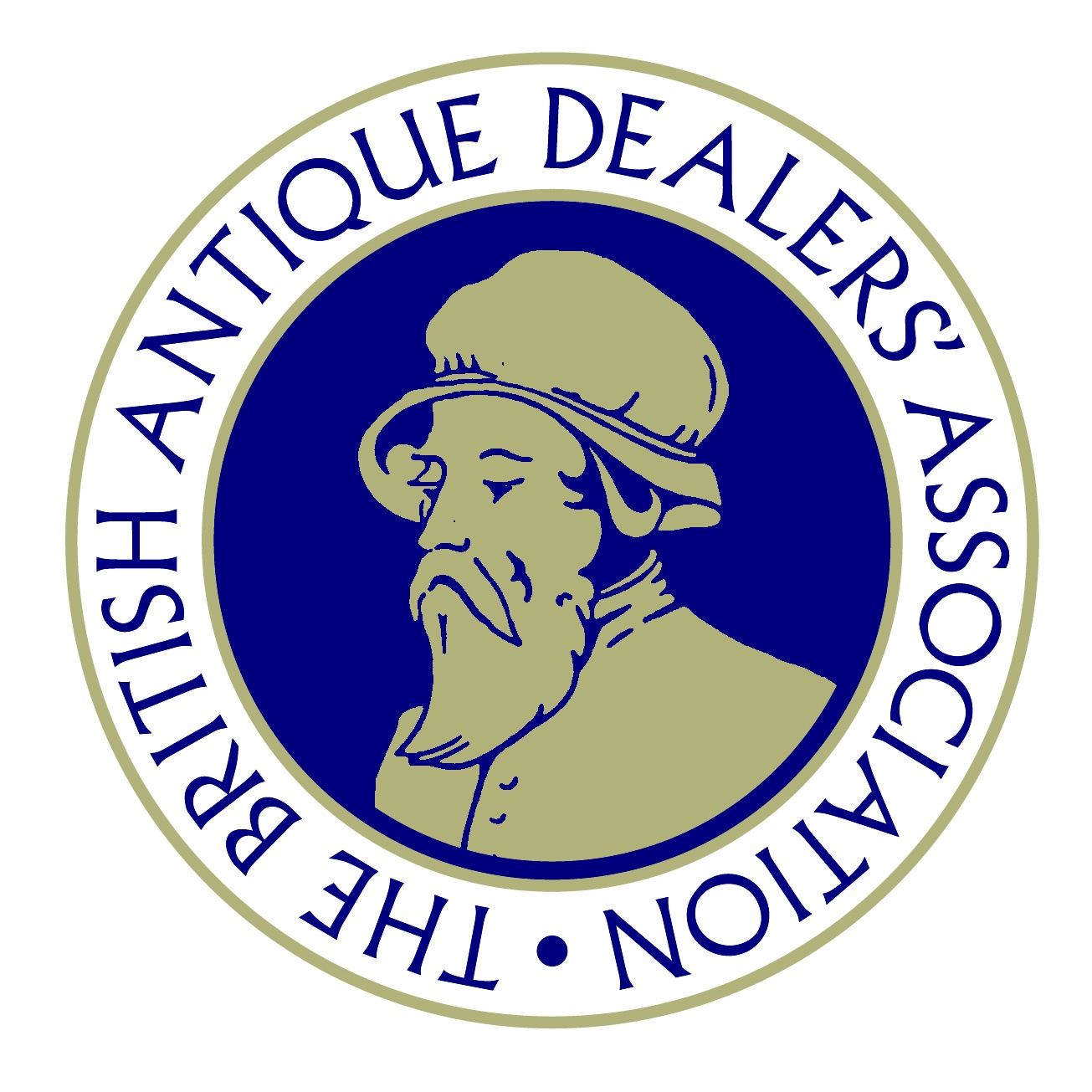Further images
In the form of kylins or lions, standing foursquare, with open mouth, bulging eyes and pronounced eyebrows. Each kylin richly decorated in green, iron-red, and yellow enamels with moulded patterns of whorls and spirals, the head raised and the mouth open and between the teeth, a small s-form spout (green on one kylin, yellow on the other), a short, hollow tail, the ears set back and, between them, a single horn on the top of its head, the body richly decorated in famille verte enamels with spiralling curls and, on the shoulders and haunches with ju-i forms containing sprays of chilong and lingzhi plants on a stippled green ground, the scales of the chest and legs painted in iron red, yellow and green, the exquisitely moulded head painted in brilliant enamels.
Literature
This particular form of the kylin is derived directly from an earlier bronze form; celadon examples with removable heads are known in the Longquan group from the Ming dynasty also and later in the Ming dynasty in the Wanli period blue and white examples are known. For a discussion on this group also with removable heads see, Arts From The Scholar?s Studio presented by the Oriental Ceramic Society, Hong Kong1986 no.232 where the author says 'it is not known when the mythical beast incense burner with removable or sometimes hinged head was first developed. The next group of this type made in porcelain would appear to be the famille verte examples made in the Kangxi period. Interestingly in this period, from the few examples recorded they were made with removable heads and as in this case made in one piece
For a similar example, see Austellung Chinesischer Kunst pl 906 p 334 (Berlin 1929).
A pair of kylin ewers from the collection of Mrs Corina Kavanagh and formerly in the Pierpoint Morgan Collectionwere sold in Sothebys 21st january 1964 lot71 and a single ewer in March 1969
Quote from Margaret Medley, Handbook of Chinese Art: ' The fabulous animal known as kylin, sometimes called the Chinese unicorn. It may be leonine, with scales and horns, or it may be an elegant cloven-footed beast, with or without scales, with a bushy mane and tail, and a horn, or a pair of horns. Variations are extremely numerous and impossible to classify satisfactorily as the Chinese have in the past, given this name to many animals, including the giraffe.
Although normally referred to as kylins, I do feel that they could be Buddhist lions as they do not have cloven hooves. The lion is protector of sacred buildings and defender of law.






